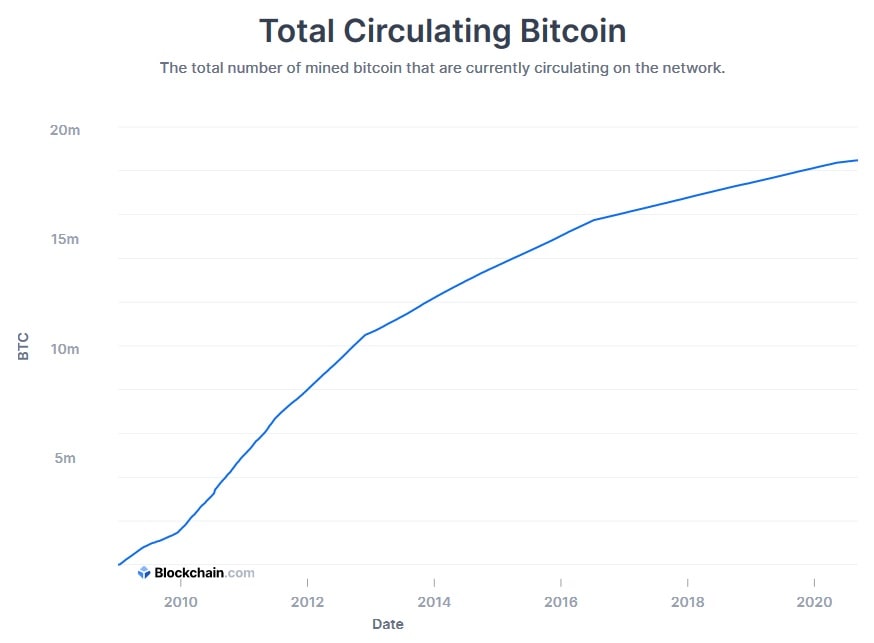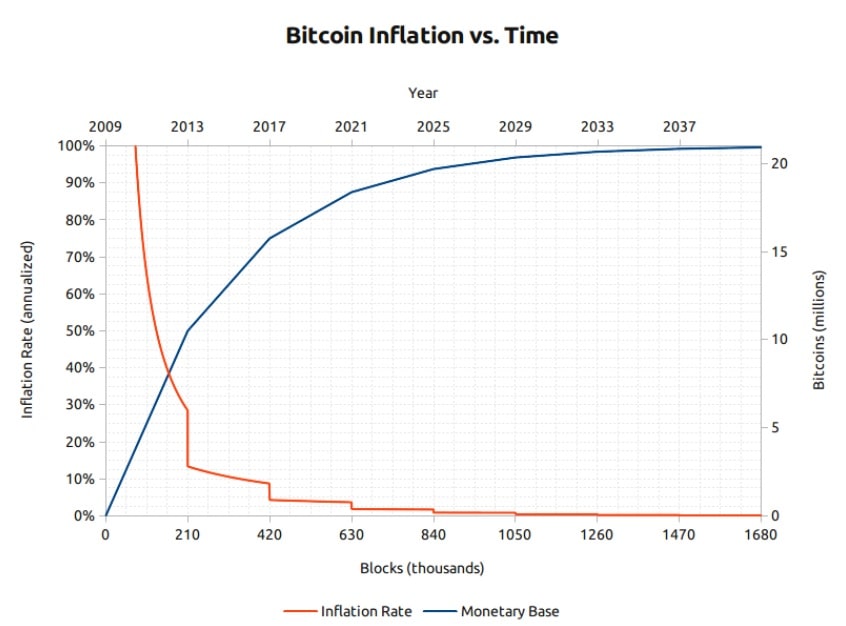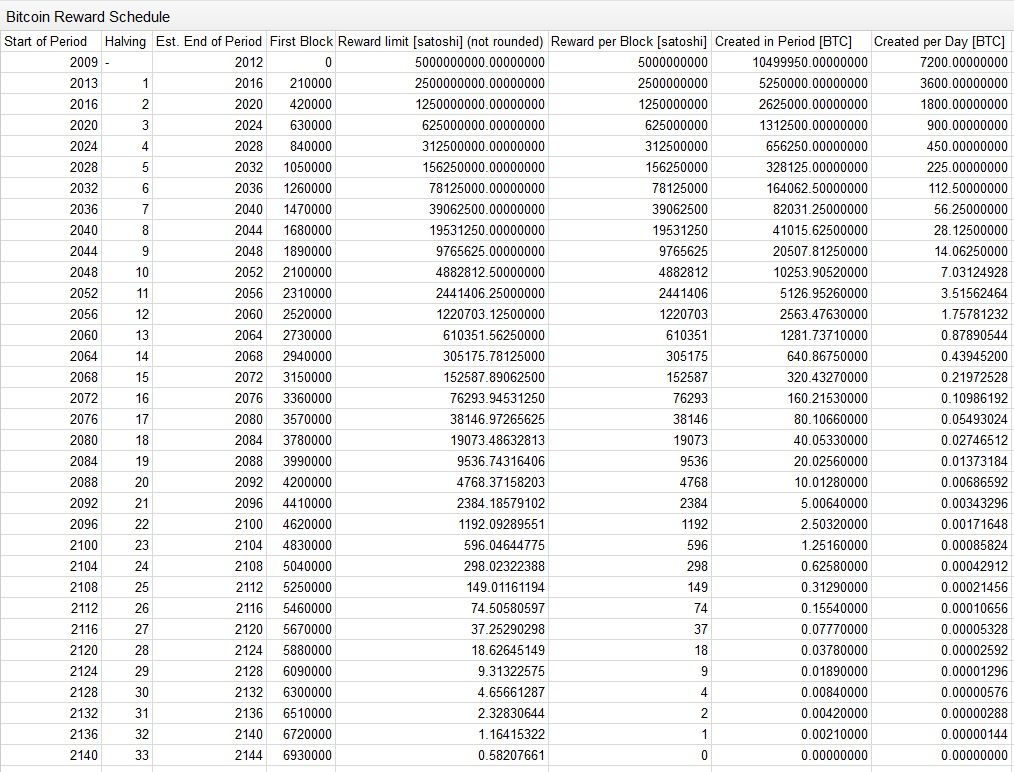How many Bitcoins are there in circulation?

Many people trying to learn more about cryptocurrencies are interested in finding out the amount of Bitcoin in circulation. However, the questions, "how many Bitcoins are there?" and "what happens when all 21 million bitcoins are mined?" are more complicated than they might seem at first glance. In this article, we'll answer this and a few other related questions in detail. So, without further ado, let's get started.
Economists and journalists often get caught up in this question: Why does Bitcoin have value? And the answer is very easy. Because it is useful and scarce. – Erik Voorhees, CEO and founder of ShapeShift
How many Bitcoins are there?
At the time of writing on 26 November 2023, there were 19,553,212 Bitcoins, although this number is constantly increasing. New Bitcoins are created through a process called mining, which verifies Bitcoin transactions and adds them to the blocks of the Bitcoin blockchain. As a reward for doing this work, the miner who managed to add a block first receives a certain amount of Bitcoins. Currently, the block reward is 6.25 Bitcoins. Given that a new block is added to the Bitcoin blockchain approximately every 10 minutes, it turns out that the total number of Bitcoins in circulation increases by 6.25 every 10 minutes.
Bitcoin stats | |
Total Bitcoins in circulation (as of 26/11/2023) | 19,553,212 BTC |
Total value of Bitcoin in circulation (as of 26/11/2023) | $1.46 Trillion |
Maximum Bitcoin in circulation | 21,000,000 BTC |
Block confirmation time | 8m 56s |
Reward per block | 6.25 BTC |
Total blocks (as of 26/11/2023) | 818,519 |
Bitcoins generated per day | 900 |
Current Bitcoin inflation rate per annum | 1.76% |

What are the limits?
The maximum amount of Bitcoins that can ever be mined is 21 million. It's unknown why Satoshi Nakamoto, the mysterious creator of Bitcoin, chose this exact number, but we do understand why the limitation was introduced: to prevent inflation. Unlike central banks, which can issue their currencies in any volume at their discretion, thus causing inflation, the number of Bitcoinsin circulation is increasing at a stable, predictable and periodically decreasing rate.

Limiting the maximum number of Bitcoins in circulation is possible through a procedure called halving. It cuts the block reward in half after every 210,000 blocks generated and happens about every 4 years. At the very beginning, the block reward was 50 Bitcoins. Since then, there have been 3 halvings, and, as already mentioned, the current block reward is 6.25 Bitcoins. The next (fourth) halving event will occur around May 2024.

How many Bitcoins are there left to be mined?
Currently, there are only 2,516,882 Bitcoins left to be mined. It's only 11.99% of the total Bitcoin circulation. But because of halving, the mining of the remaining Bitcoin will become 2 times slower every 4 years. Thanks to this slowdown, the last Bitcoin will be mined around 2140.

It's worth mentioning that even after the last Bitcoin is mined, mining will not necessarily stop since the reward for mining (and, as a result, for keeping the Bitcoin network operational) will still exist in the form of commissions for transactions included in the block.
Bitcoin in circulation today
But when you try to answer the question "How many Bitcoins are there now?", you need to take into consideration one more factor. "How many Bitcoins are there in total?" and "How many Bitcoins are currentlyin circulation?" are really two different questions with different answers. The thing is that since the first block was generated, a considerable amount of Bitcoins has been lost. The only way to control Bitcoins on any Bitcoin address is to know the so-called "private key" to the address. So, if the owner of the Bitcoins has lost the private key or, for some other reason, is unable to use it, the Bitcoins on that address are effectively lost and cannot be withdrawn from there. Although people now tend to keep their private keys safe, in the days when Bitcoin had little to no monetary value, its owners were much less careful.
Some of the reasons Bitcoins can be lost:
- A physical device containing the private key can be lost or broken beyond repair.
- A paper wallet can be lost or destroyed.
- An owner can die without giving anyone the private key.
So, the moral of the story is "always make a backup".
How many Bitcoins are lost? The answer is: we don't know for sure. To an outside observer, a lost Bitcoin looks identical to one that isn't lost. The only way to make a guess is to estimate the time during which there were no outgoing transactions from a specific Bitcoin address. According to a study by blockchain analysis company Chainalysis, about 4 million Bitcoins have been irretrievably lost. Moreover, the number of lost Bitcoins will only increase over time.
In addition, many Bitcoin holders, including large ones, prefer not to use their Bitcoins as a means of payment. Instead, they prefer to store them in crypto wallets for an indefinite period of time. That means that even though these Bitcoins aren't lost, they can't be considered to be in circulation.
All things considered, the actual number of Bitcoins in circulation today is much less than the total number of Bitcoins mined.
Tags
Try our Bitcoin Cloud Miner and get additional crypto rewards based on your trading volume. It's immediately available upon registration.
Try our Bitcoin Cloud Miner and get additional crypto rewards based on your trading volume. It's immediately available upon registration.
FAQ
How many Bitcoins are currently in circulation?
As of November 2023, there are approximately 18 million Bitcoins in circulation out of a maximum supply of 19.5 million. Approximately 2 million Bitcoins are still available to be mined.
What happens when all the Bitcoins are mined?
When all Bitcoins are mined, no new Bitcoin will be issued. This will likely impact Bitcoin miners, but how they are affected will depend on the evolution of Bitcoin as a cryptocurrency. Bitcoin transactions will still be processed, and miners will still be rewarded with transaction fees instead of new Bitcoin. Suppose Bitcoin becomes primarily a store of value in the future. In that case, miners can still profit by charging high transaction fees for processing high-value or large batches of transactions, especially with the help of more efficient layer-2 blockchains like the Lightning Network.
When will all Bitcoins be mined?
The full supply of 21 million Bitcoins is expected to be reached by approximately 2140, at which point no additional Bitcoins can be mined.
Who mined the most Bitcoins?
As of 2023, Satoshi Nakamoto, the anonymous creator of Bitcoin, is identified by River Intelligence as the top BTC holder. They estimate Satoshi Nakamoto owns approximately 1.1m BTC tokens across 22,000 addresses. The US dominates the global Bitcoin mining industry, accounting for over 38% of the network's hash rate. Between January 2020 and January 2022, the US experienced a substantial rise in its global share of Bitcoin mining, increasing from 4.5% to 37.8%.



